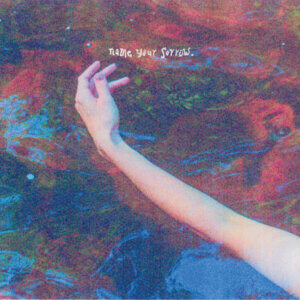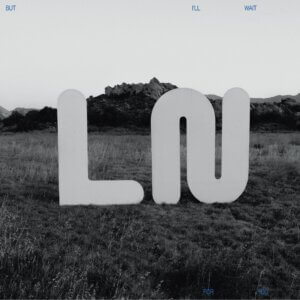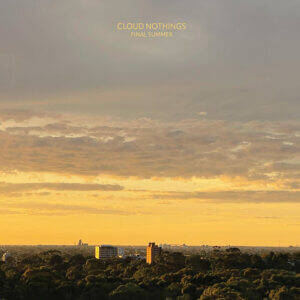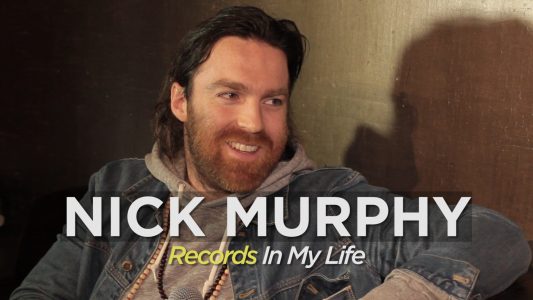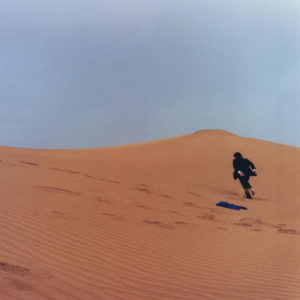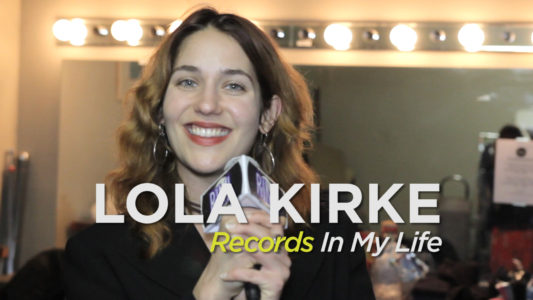Our interview with Slow Magic

Speaking to the enigmatic and mysterious Slow Magic only requires moderate vetting with just a few levels of security. Luckily, we passed, and Northern Transmissions was able to talk about the long awaited new album, How to Run Away, and find out what drives the Slow Magic project. Ranging from autobiography to animals to magic powers, we also find out where you might want to run away to. Alice Severin peeks behind the mask.
NT – It’s a beautiful album.
SM –Thank you.
NT – And it’s got a great title – How to Run Away. There’s something forbidden about the idea of running away but it’s a universal feeling – I think everyone has had the impulse at any given moment to want to run away. What made you choose to call the album that?
SM – Yeah, I definitely think it is something that everyone has felt or can relate to, either wanting to or actually really running away. So I wanted the record and the songs to tell a story of what it’s like to drop everything and either go do something crazy or chase a dream. And, yeah, I guess it’s a little bit autobiographical because in the past few years just starting this project and getting to travel a lot with my music, I definitely have run away from home to chase the dream.
NT – How has it been? How have you enjoyed the journey so far?
SM – Yeah, it’s been amazing and crazy and it’s been a lot of work and a busy schedule. I’ve got to travel a lot, through Europe and Russia recently, and all over the United States. It’s been really, really fun and yeah, it’s awesome.
NT – How was Russia? That must have been an interesting place to play.
SM –Yeah, it’s pretty crazy there. I mean, it’s so far from home, and it’s really cool that you can meet people there and have friends in a place that’s so far away.
NT – It seems that’s one of the themes in your music, the universality of music, not needing words to get the feeling across.
SM – Yeah, definitely. I want the whole project to be something that is a little bit universal as far as anyone with any language could hear it and enjoy it. I think music itself is obviously universal and so I guess I want it to be that way as much as I can.
NT – The tour starts tomorrow in North America. What do you do to prepare for the tour and what do you like most about live performance? Are you planning to do anything differently now that you’re headlining?
SM – There’s a lot of preparation, a lot of behind the scenes mask building and repairing, and things like that (laughs). And also, it’s fun. I’m usually pretty stressed and working late into the night before the tour. I just want to make it as good as I can. There are a few new things for the tour that I’m going to be doing as far as new music and also some new drums and different stage setups. So I’m excited to share that with everyone.
NT – I wanted to ask you about the National Geographic commercial which used your song Corvette Cassette. Animals are so straightforward and untamed, and your mask is based on an animal. Is that why you agreed to do it, and does that quality appeal to you, the kind of wildness and freedom of animals?
SM –Yeah, I haven’t done too many things for commercials so it was a really cool opportunity. I saw the footage pretty early on when they were asking me if I wanted to do it, and it was just really beautiful. I think it went perfectly with what I thought the song sounded like, visually. So yeah, definitely a really fun process, I got to remix my song for it, and added a few things. It was really cool to soundtrack such beautiful footage for the commercial.
NT – You can see it online, it looks fantastic. And the music fits, it really does. Did you work on the making the music match the editing? How was that process?
SM –Yeah, it was actually really cool to work directly with the editor. I took what I had of the song and what they had roughly edited down to a minute or thirty seconds. There were a lot of different things in the edit, a few sound effects and things like that so, I took that and kind of added on. It was fun. I think scoring is definitely something I’ve always been interested in and had a desire to try and do.
NT – The song Bear Dance is one of my favorites on the album. Do you have a favorite song at the moment on the album or do you have one that you’re really looking forward to performing live?
SM – I think it changes from day to day and throughout working on the project, there’s just so much time spent with each song. But it’s hard to say for sure. I am really excited to play the first song on the record, Still Life, ready for that one to open up the show just like the record opens with it.
NT – So a lot of people seem to put electronic music in the same kind of genre. You’ve got moments on the album that are jazz influenced but it’s clearly not a jazz album. Are you interested in blurring some of the lines between genres, or ignoring them altogether?
SM – Yeah. Definitely. I mean, I just kind of make music from in my head, these crazy ideas. I love jazz and I love electronic music and a lot of things really. And I think all that just comes together when I’m making music. And I wouldn’t really say that there is a specific genre that everything fits into for my music, or for a lot of music that’s out there. So I think it’s cool to be able to maybe blur the lines between – I don’t know, maybe make something that people have to try to figure out.
NT – How do you start off composing your songs? Do you tend to use a particular instrument? There are some great acoustic sounding piano moments in the new album.
SM – Thanks. Yeah, I guess it all depends on what song or where I am or where we’re recording. I think mostly I will start with a simple drum or piano idea. Those are the instruments that I started playing when I was the youngest, I guess, so I think they’re ingrained in me and that’s kind of how I think.
NT – What about the drums appeals to you? What about the act of drumming? And you go into the audience with the drums.
SM – Yeah, I think it’s something I was drawn to from a really early age. And I think the reason it sticks and the reason I really enjoy it having it as a part of my live show is that especially since it’s an electronic based show, I think it’s adding something really primitive and simple and easy to understand, because it’s really visual. When someone’s playing a drum you can really see what’s happening. A lot of times when I’m doing things on the computer or something maybe people don’t really know what’s going on, if I’m checking my email or if I’m actually playing something. So I think it’s something in there that definitely adds a tribal, primitive kind of element to it.
NT – That seems to be another theme – with the mask, and the element of nature in the video for the first song, and the photos for the album. Do you think that primitive kind of aspect, that type of energy is something you try to get across to audiences?
SM – Yeah, I think it’s definitely something that I find fascinating and that I hope people could see or hear in my music. I guess it just happened naturally as far as the progression of figuring out how to play the songs live. I think it’s maybe not as intentional but it’s definitely something that’s there.
NT –You talk about “music from your imaginary friend” and also that idea of “not from around here”. There’s something about those descriptions that’s kind of freeing, not pinning you down.
SM –Yeah, yeah, definitely, and when I started I wanted to approach the way I shared music so that people could just focus on the music itself, instead of a person, or a place, or a name, or a face. So that’s something that I thought of really early on and it’s still something that I feel, just the way I want people to discover my music.
NT – Anonymity for you seems like a statement. But people seem to assume that once we know somebody’s name or where they’re from, we know all about them which is certainly kind of ironic and not true. Do you think that being anonymous is part of the project?
SM –Yeah, I definitely think it’s something that is important to the project and also fun at the same time. Because, like you’re saying, you could know someone’s name and where they’re from and think you know everything about them but I’m sure people who listen to my music know more about me than if they knew my name or where I was from.
NT – Then people are forced to focus on the music. And if there aren’t a lot of lyrics, do you think they have to focus more on their emotional or physical response?
SM –Yeah, I think so. And I hope that is also something that happens when someone’s listening. I really don’t know exactly what someone might think or feel if they are listening to my music but I’d hope that they feel inspired and like going out and doing something or making something.
NT – That idea that you were talking about at the beginning, of going off and following your dream.
SM – Yeah.
NT –And the idea of wearing a mask. Masks are in every culture in a way, and they are always related to ritual and the spirit and natural world. In a way, musicians are a little bit like our shamans or priests or something, the connection to something bigger than ourselves. Do you think that’s true?
 SM –Yeah, I think definitely. And I think music is also something that is bigger than what we can explain or understand. I think it’s fascinating to wonder about the power of music itself and how it affects all of us. That’s kind of a mystery.
SM –Yeah, I think definitely. And I think music is also something that is bigger than what we can explain or understand. I think it’s fascinating to wonder about the power of music itself and how it affects all of us. That’s kind of a mystery.
NT –That’s true. There are people that study acoustics and the different scales and their effect on people. Does that kind of thing ever interest you?
SM – Yeah, I studied music in school, jazz, and marching band and things like that. But I think that music theory and the crazier things about it are really interesting – something I’d like to learn more about.
NT -There was an exhibition of masks at a museum, I can’t remember where, and the title of the exhibition was Reveal/Conceal. So I wanted to ask you – what do you think your mask reveals?
SM – That’s a good way to look at it. I don’t know, I think that when I do wear the mask and get on stage I can have a bit more freedom to kind of express myself in a way that maybe I’d be a little bit more afraid of if I was just standing up there. I don’t know exactly but I’m sure if you asked someone else, they might be able to tell you. But I think that it is freeing, a way to express myself.
NT – Did you come up with the idea of that particular mask, was it an inspiration, or did you try some different ideas first? What made you settle on that kind of form and shape?
SM – Fairly early on in the project I had some music out anonymously but I didn’t have a mask yet, and I had an opportunity to play a show. So I went to my friend, Jonas McCluggage, who’s an illustrator who’s really talented. And I just told him that I needed an imaginary mask and so one night we were hanging out and he painted on cardboard and made the mask. And that’s what stuck for this long. It’s taken a few different upgrades, with lights and things like that but the design is still the same. If you google search he has a website and a comic series. He’s a really talented guy.
NT – Do you think there is something about you that inspired that particular animal? I know that some people ask each other who they think their animal would be, what kind of animal they are most like.
SM – Oh yeah, I like doing that and I like asking people that too. I don’t know – I think maybe he did. It’s up for debate or interpretation on what animal it really is, I mean a lot of people say different things. And I think it’s really whatever someone wants it to be.
NT – Again, it seems like pinning it down if you give it a name and it’s better if people just decide what they see it as, instead of calling it a particular animal. Because it’s easy to imagine how someone else might see it a different way.
SM – Yeah. Exactly. I think that’s kind of how the whole project works. And I think that that’s how I want it to be – whatever someone really sees it as.
NT –So – five albums that still inspire you, that you return to.
SM -Yeah, that’s a tough question, but I’ll just go off the top of my head.
I would go with
Sigur Rós from Iceland, the parentheses ( ) album, they’re amazing.
Also, from last year, the album Woman by Rhye. It’s really really good.
 Another Icelandic band, múm, one of their earlier albums, Finally We Are No One. That’s one that I have been listening to for a while, I guess it’s like ten years old now, so.
Another Icelandic band, múm, one of their earlier albums, Finally We Are No One. That’s one that I have been listening to for a while, I guess it’s like ten years old now, so.
I would have to say also Pet Sounds, by the Beach Boys.
And then the fifth one, Thank Me Later, by Drake.
NT – Do you think there is like a thread between them, is there anything they have in common, or just you?
SM – Yeah, I think they do all have something in common. I think if you played them back to back or shuffled them all that maybe they would fit together, even though all of them are very different. I think all of them are really beautiful and inspiring.
NT – So this album will be out today. Are you just focusing on the tour now, or are you thinking about another album after this?
SM – I think as far as the next album, I’m just thinking. I have ideas but I want to give this record a chance to get out there and I want to tour for it. I think the next record will come pretty naturally when I come to sit down and record it.
How to Run Away will be released September 9th on Downtown Records.
Slow Magic is on tour now.
Latest Reviews
Tracks
Advertisement
Looking for something new to listen to?
Sign up to our all-new newsletter for top-notch reviews, news, videos and playlists.
